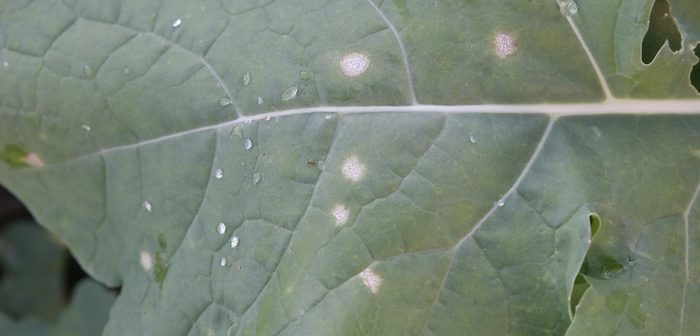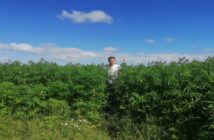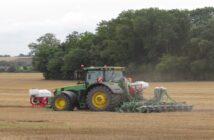Some winter oilseed rape may already have 10% of the crop affected by phoma, according to AHDB, based on leaf spot forecasts for the disease.
“One monitoring site in Herefordshire (ADAS Rosemaund) has been the first site predicted to reach this infection level (30 September 2019), which indicates the need to consider treatment in some situations,” said AHDB..
Crops usually start to breach treatment thresholds in October. Compared to 2018/19, a later disease onset is forecast for most sites. However, phoma onset appears to have started relatively early this autumn at some locations.
“Late-summer and early autumn rain speeds up the maturation of phoma spores on stubble,” said Catherine Harries, who manages disease research at AHDB. “In some areas, it was relatively wet over this critical period; hence, the potential early onset. In fact, there have been some field reports of early spotting in crops.
“Naturally, there’s a lot of variation. For example, the South East was very dry up to a week ago and that tends to delay development. People should check the forecast, monitor for spots and treat susceptible varieties, when thresholds are reached.”
AHDB’s suggested action points include:
- Monitor crops for phoma leaf spots
- Look on the underside of leaves, if white tufts (mycelium and spores) are present, the symptom is downy mildew, not phoma
- A fungicide applied as close as possible to a threshold helps maximise its effect
- Treat varieties with lower resistance ratings for stem canker (7 and below) and backward crops first, when 10–20% of plants have phoma leaf spot
- Only treat varieties with high resistance ratings for stem canker (8 to 9) if more than 20% of plants have phoma leaf spot
- When reinfection occurs, consider a second spray – typically, four to ten weeks after the first spray
- Adjust spray programmes to account for any late-autumn fungicide (November) required for light leaf spot control
See previous Agronomist and Arable Farmer report
Access the forecast and fungicide performance data here




